Recent Articles
Popular Makes
Body Types
2020 Hyundai Kona Road Test and Review
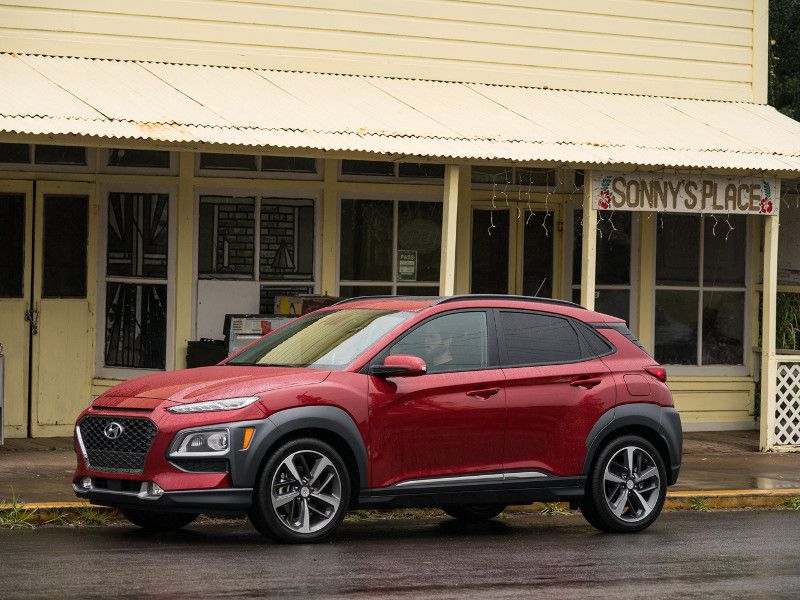
2020 Hyundai Kona red parked near building ・ Photo by Hyundai
The 2020 Hyundai Kona is a subcompact crossover with affordable pricing and tidy dimensions that make it a great choice for those who live in urban environments. Introduced for the 2018 model year, the Kona was the smallest crossover in the Hyundai lineup until now. This year, though, the all-new Hyundai Venue brings even smaller and more affordable option.
The increasing number of crossover choices, even within an individual automaker’s lineup, can make it hard to differentiate one from the next. The Kona stands out first for its aggressive styling both inside and out. Combine that with good driving dynamics that make it fun to drive and a wide range of standard features, and you have a crossover with loads of appeal. Let’s take a closer look at the 2020 Hyundai Kona and see if this is the right crossover for you.
Five Available Trim Levels
The Hyundai Kona is available in a range of five trims. Front-wheel drive is standard, with the option for all-wheel drive for an added $1,400 across the lineup. The base SE starts at $20,100 and features a 2.0-liter four-cylinder engine with a six-speed automatic transmission. Standard features include a 7-inch infotainment touchscreen, Apple CarPlay, Android Auto, and cloth seats. The SEL adds heated front seats, HD radio, and a leather-wrapped steering wheel and shift knob for $21,900, while the SEL Plus adds an eight-way power driver’s seat and Infinity premium audio for $23,750.
The top two trims in the Kona lineup get a 1.6-liter turbocharged four-cylinder paired to a seven-speed automatic transmission. The Limited, which adds leather seats and automatic temperature control, starts at $25,900. The best-equipped Kona is the Ultimate. It’s priced at $27,750 and includes an 8-inch color touchscreen, heads-up display, and Blue Link guidance. Hyundai also sells an all-electric Kona EV, which is more expensive and which we review separately.
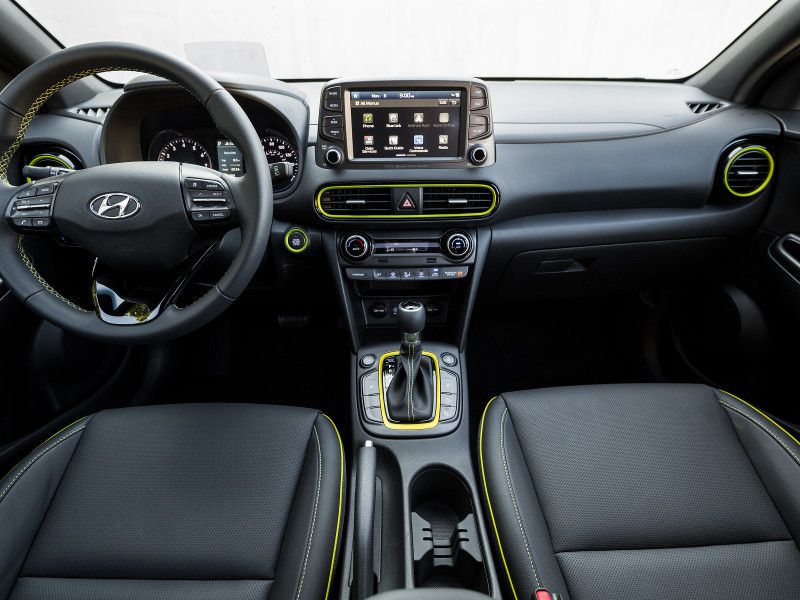
Photo by Hyundai
Choice of Two Gasoline Engines
The 2020 Hyundai Kona comes with a choice of two gas powertrains. Base models get a 2.0-liter four-cylinder with 147 horsepower and 132 lb-ft of torque paired to a six-speed automatic transmission. This engine does a fine job of getting the Kona around town, but it’s a different story on the highway. It takes some effort to accelerate to high speeds, which may prove frustrating to those who prefer a sportier experience.
The top two trims of the Kona offer that extra performance courtesy of a 1.6-liter turbocharged four-cylinder engine with 175 horsepower and 195 lb-ft of torque. This is paired to a seven-speed dual-clutch automatic. This powertrain provides a much better driving experience, especially when it comes time to merge onto the highway. It does so easily and has no trouble delivering an extra burst of power for passing slower vehicles.
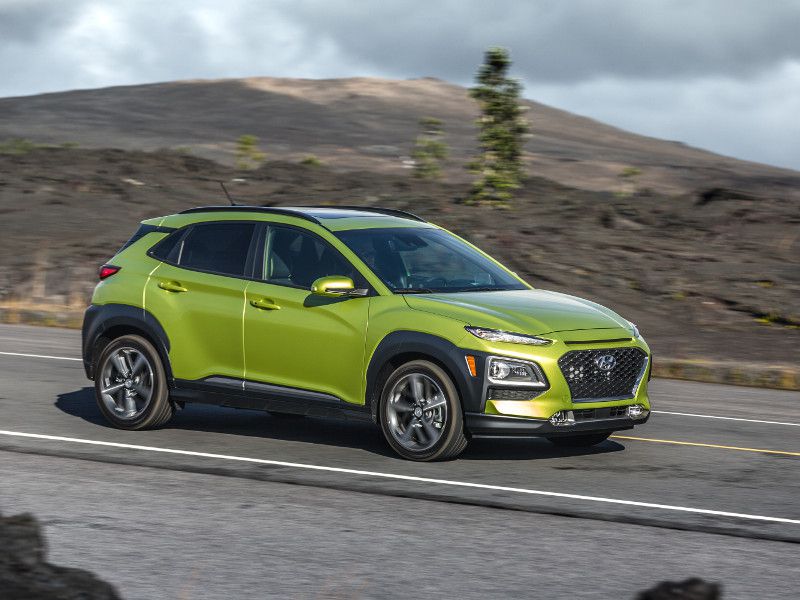
Photo by Hyundai
Both engines are fuel-efficient.
There are lots of reasons to go with a crossover, from its affordability to its versatility to carry people or cargo. Also high on the list is fuel economy that makes crossovers a great choice as commuter cars or for road trips. The 2.0-liter engine with front-wheel drive gets an EPA-estimated 27 mpg in the city, 33 mpg on the highway, and 30 mpg combined. Choose all-wheel drive and the numbers fall to 26 mpg in the city, 30 mpg on the highway, and 28 mpg combined.
The Kona posts similarly strong numbers with the more powerful 1.6-liter engine. Front-wheel drive models get 28 mpg in the city, 32 mpg on the highway, and 30 mpg combined. Add all-wheel drive and the turbo Kona achieves an EPA-estimated 26 mpg in the city, 29 mpg on the highway, and 27 mpg combined.
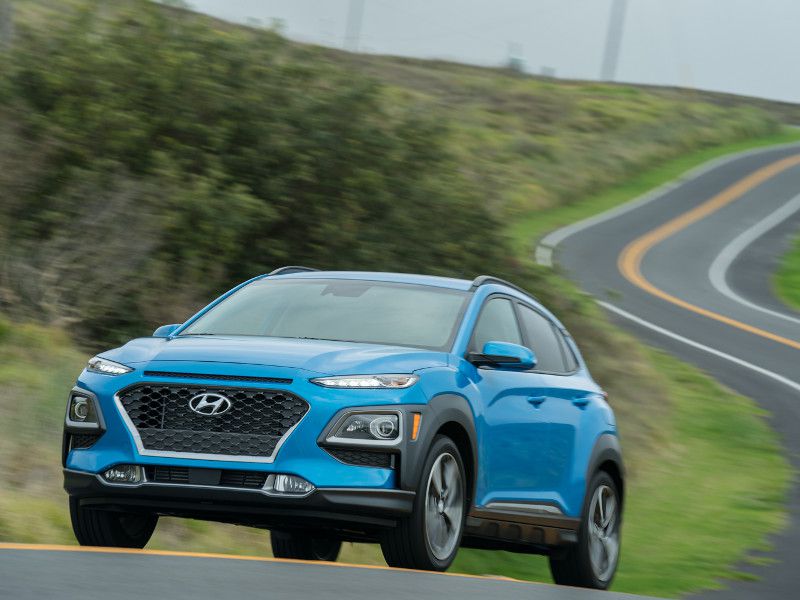
Photo by Hyundai
Minimal noise makes a relaxing ride.
The Hyundai Kona handles well, with light, crisp steering that makes it easy to manage over longer road trips. There’s very little body roll even in tighter corners, despite the Kona’s more upright posture. It is surprisingly agile on winding roads, taking corners easily and letting the driver enjoy the trip. Although the Kona isn’t a sporty ride, it manages to avoid the doldrums where so many of today’s crossovers end up.
The ride is also good without too much bounce and sway. Uneven road surfaces are well-managed, and rougher pavement won’t rattle passengers. The Kona also offers a quiet ride. Road and engine noise are kept nicely outside the cabin, and only the windiest of weather managed to intrude on the otherwise quiet interior.
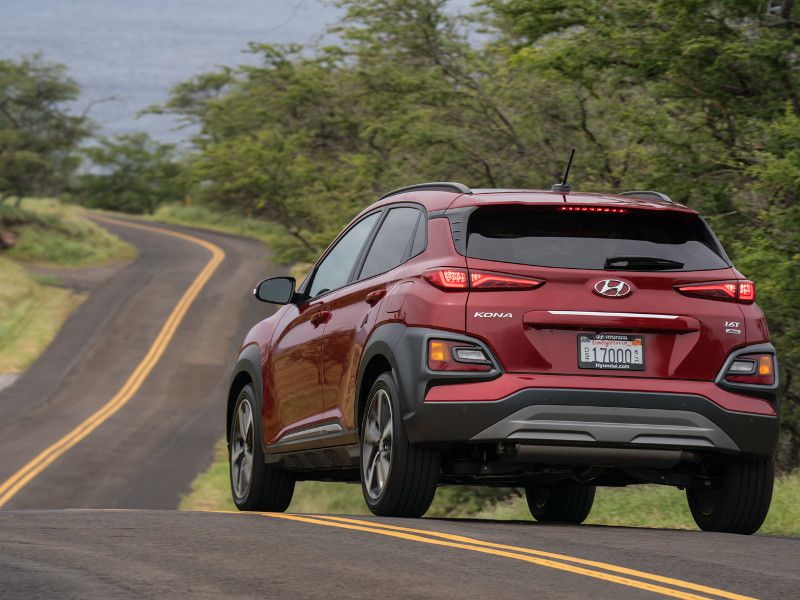
Photo by Hyundai
Excellent Crash-Test Ratings
The 2020 Hyundai Kona received excellent results in crash tests. It’s an Insurance Institute for Highway Safety 2019 Top Safety Pick+ and received a top rating of five stars from the National Highway Traffic Safety Administration.
In addition to those crash-test results, the Kona includes a wide range of standard and available safety features. Standard safety on the base Kona includes lane-keeping assist, forward collision avoidance assist, and a driver attention warning. Move one step up the trim ladder and there’s also blind-spot monitoring, lane change assist, and a rear cross-traffic alert. The top trim gets pedestrian detection capability for its forward collision avoidance, smart cruise control, and parking sensors. While the base model has limited advanced safety, the bulk of the range is well-equipped from a safety perspective. Combined with the Kona’s crash-test results, this crossover is one you can drive with confidence.
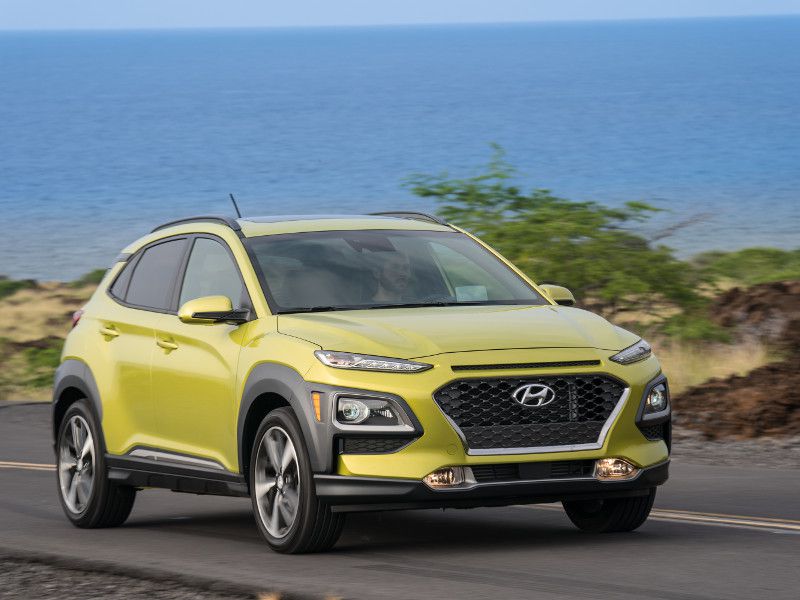
Photo by Hyundai
Comfortable and Roomy Interior
The Kona is an affordable car, which often means an interior lacking in comfort and style. The Kona, however, offers a roomy cabin with space for five adults. The rear seats can accommodate three adults, but it’s a tight fit, especially for those broad across the shoulders. It’s best reserved for two in the back on all but the shortest of trips. Front passengers get supportive seats with minimal bolstering that make long trips a breeze.
In addition to being comfortable, the Kona has an attractive interior. There are some hard plastics, but they don’t look cheap. The Kona is attractive with a well-designed interior that includes the option for vibrant interior accent colors like Sunset Orange. This fits in with its vibe of being a fun crossover rather than just another in a long line of cookie-cutter options.
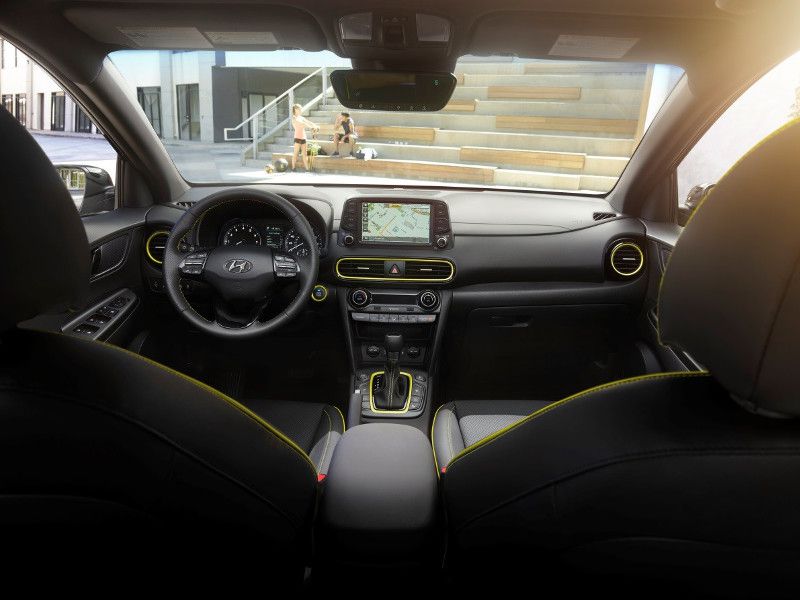
Photo by Hyundai
Versatility for Your Cargo
Part of what makes crossovers such a popular choice is their versatility for cargo. They do a good job of balancing the need to carry passengers, cargo, or some combination of the two from one day to the next. The 2020 Hyundai Kona offers 19.2 cubic feet of cargo space behind the rear seats. Fold the rear seats down and cargo capacity expands to 45.8 cubic feet. That’s plenty of room to handle everything from a week’s worth of groceries to the kids’ backpacks to weekend project supplies.
The Kona also has a wide hatchback opening, letting it easily swallow larger cargo when the need arises. If that cargo happens to be heavy, the Kona makes loading up less difficult thanks to a low load floor. While those with significant cargo needs will need a bigger vehicle, the Kona does a great job of managing smaller loads.
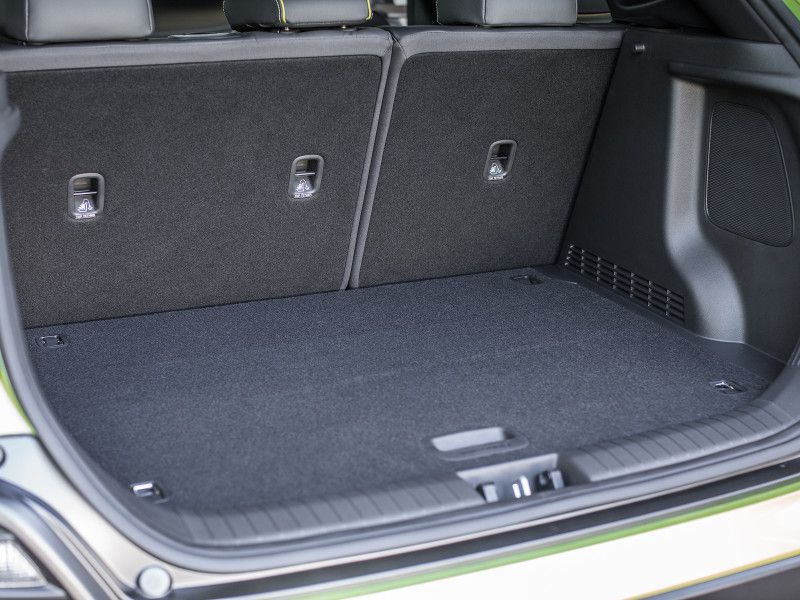
Photo by Hyundai
Smartphone Integration Across the Lineup
The 2020 Hyundai Kona comes with a fully featured infotainment system, even in the base trim. This includes a 7-inch color touchscreen, Apple CarPlay, Android Auto, and two USB ports. While some automakers are excluding key smartphone connectivity from base models, Hyundai doesn’t punish those on a tighter budget by reserving Apple CarPlay and Android Auto for only top trims in the lineup.
Midrange trims see the addition of wireless smartphone charging, HD radio, Sirius XM, and an eight-speaker Infinity premium audio system. This includes two speakers in the front doors, two tweeters, two rear speakers, a center front speaker, and a subwoofer. Exclusively on the top Ultimate model, there’s a larger 8-inch color touchscreen with navigation. Regardless of which Kona trim you choose, infotainment includes key features to help you stay connected when you’re on the go.
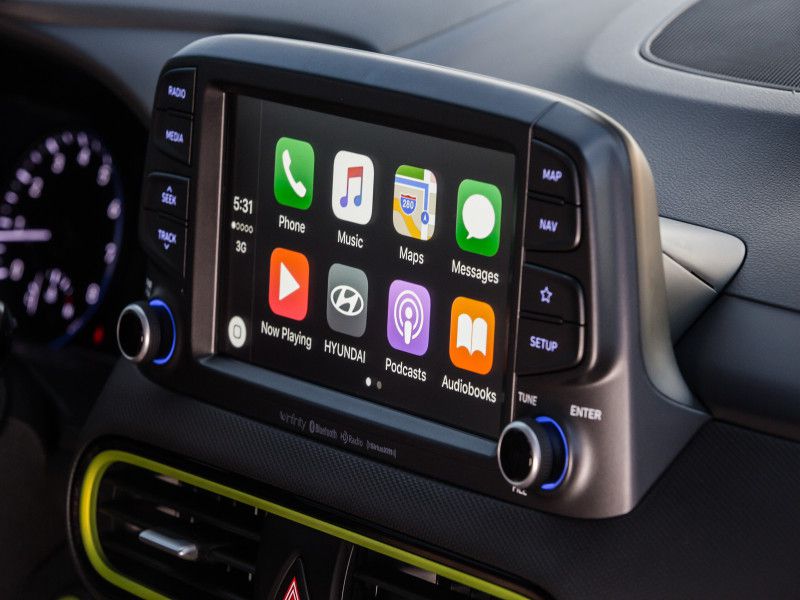
Photo by Hyundai
Final Thoughts
The Kona is still a relative newcomer to the compact crossover segment, but it’s a real standout. It has bold exterior styling that keeps it from looking like just another crossover, and an attractive and comfortable interior. As affordable as it is, Hyundai still manages to include a wide range of standard features on every trim, so it never feels or looks like you had to sacrifice.
A choice of two engines includes a turbocharged option for those who like a more spirited driving experience without huge sacrifices in fuel economy. Finally, the Kona receives top marks for safety in crash tests to set your mind at ease. The 2020 Hyundai Kona crossover offers the features and versatility crossover buyers want with a price that makes it easy to afford even on more modest budgets.
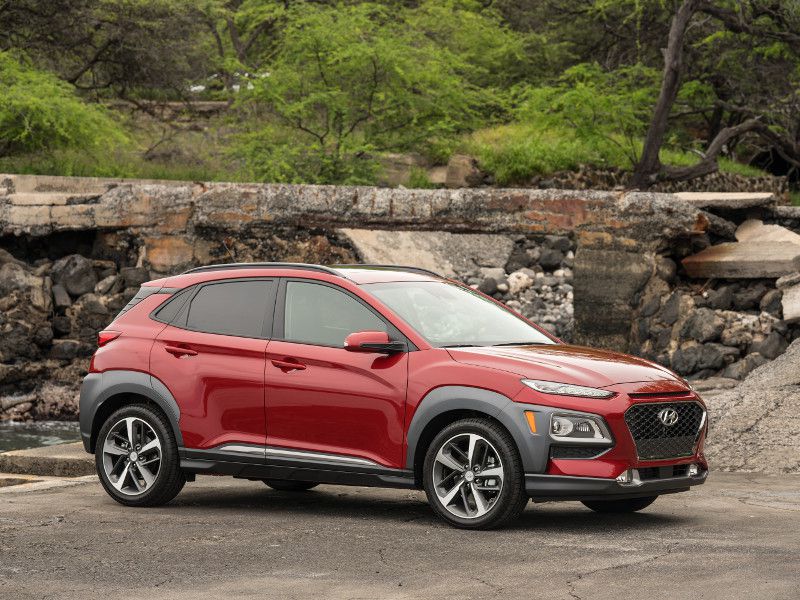
Photo by Hyundai